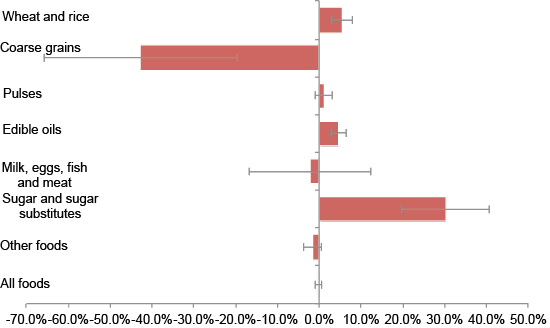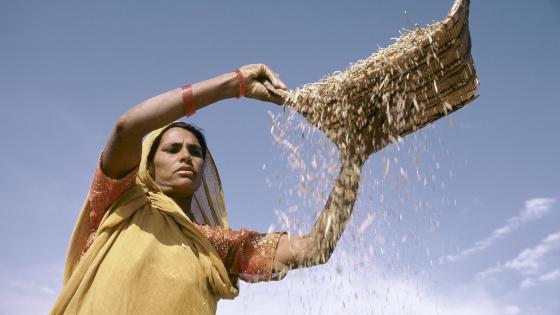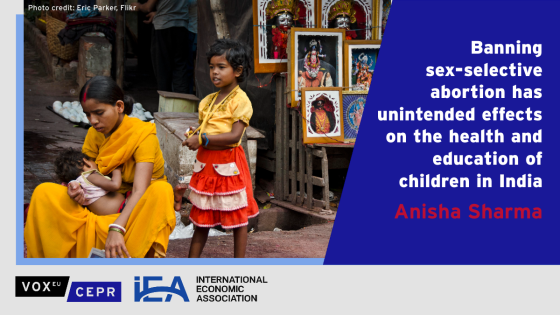In September the Indian government passed a food security bill guaranteeing 75% of the country’s rural population and 50% of its urban population 5 kilograms of food grain per person per month at heavily subsidised prices (Parliament of India 2013). The bill, projected to cost 3% of the nation’s GDP in the first year of its implementation, has faced criticism as it expands the Targeted Public Distribution System (TPDS) - India’s existing food subsidy programme that is well known for administrative inefficiencies, corruption, and wastage (Bhalla 2013, Shiva 2013).
An evaluation report commissioned by the government documented that only 42% of the subsidised food grains released for the poor actually reach them due to corruption and errors in their identification (Planning Commission 2005). Administrative and handling costs are also high: for every rupee of subsidy transferred to the poor, the Indian government spent 3.65 rupees, according to the government’s own evaluation. The quality of TPDS, however, is not equally bleak across the entire country. Khera (2011) documents that there are seven large states where TPDS has been functioning well, and another five states where it is improving.
Will the subsidy programme improve the poor’s nutrition?
The policy question, however, remains:
- Would India’s expanded subsidy programme, if there were no corruption, improve the nutrition of the poor?
The answer, based on empirical evaluations of food subsidy programs in India and other developing countries, unfortunately, is no. Jensen and Miller (2011) analysed data from a randomised programme of large price subsidies for the poor in two provinces in China and found no evidence that the subsidies improved nutrition. In one of the provinces, they found that the food price subsidy induced people to substitute away from the subsidised staple food towards foods that cost more per calorie. Their research is an improvement over previous studies that have been criticised for investigating variations in food prices that were not exogenous to demand. One criticism of Jensen and Miller’s study, however, is that the participants in that study were aware that the subsidy would last only six months. The impact of a longer-term food price subsidy programme may differ from that of a short-term experiment where the recipients know that the benefit is temporary.
Our study of the effect of food price subsidies
In Kaushal and Muchomba (2013), we study the effect of an exogenous increase in rice and wheat price subsidies resulting from the introduction – in 1997 – and expansion – in 2002 – of TPDS. When TPDS was introduced, poor households could purchase 10 kilograms of rice or wheat per household per month at approximately a third of the market price. The monthly allotment was raised to 35 kilograms in 2002. The government identified households below the federal poverty line and issued them ration cards that could be used to purchase the subsidised grains. We use the probability of having a ration card as an instrumental variable to predict the food price subsidy of households. We focus on rural households with per capita expenditures less than the median (or less than $1.04 per person per day at the exchange rate based on purchasing power parity) in states where TPDS has been functioning well.
Diverse consumption patterns across India allow us to study the effect of the food price subsidy in two types of districts:
- those where wheat and rice are the staple food; and
- those where coarse grains are the staple food.
In the former type of districts, the average monthly consumption of rice and wheat per household is 35 kilograms – the maximum subsidised amount – or higher, and, therefore, the food price subsidy is likely to have a purely income effect. For these districts, we estimate the effect on nutrition and consumption patterns of the increase in income from the TPDS subsidy. In the latter group of districts, the average monthly consumption of rice and wheat per household is 16 kilograms, and the subsidised price is the marginal price for most households after expansion of TPDS. For this group we estimate the effect of food price subsidy on nutrition and consumption patterns.
In our analysis, we find that TPDS expansion increased the monthly per capita subsidy amount in high wheat- and rice-consuming districts by 15 to 18 rupees per person.1 This amount represents 5% of the per capita expenditure on wheat and rice in the pre-TPDS expansion period. In districts where coarse grains are the staple food, TPDS increased the percentage price discount on rice and wheat by 19-21%.
Figure 1 Effect of a 1% increase in subsidy amount on calorie intake from specific food items in high rice/wheat-consuming districts
Note: Standard errors shown as error bars
In Figure 1, we present estimates of the effect of income from the subsidy on calorie intake. The wheat and rice price subsidy amount from the TPDS program had a negative, but negligible and statistically insignificant effect on total calorie intake. However, there were changes to consumption patterns. A 1% increase in subsidy amount increased calorie intake from wheat and rice by 5.5%, and also increased calorie intake from two non-subsidised food groups – edible oils, and sugar and sugar substitutes – but decreased consumption of calories from coarse grains by 42.7%.
Increasing the price discount on wheat and rice also had no effect on total calorie intake in districts where coarse grains are the staple food. We find that the food price subsidy changed consumption patterns toward increased calorie intake from wheat and rice and away from coarse grains (see Figure 2).
Figure 2 Effect of a 1% increase in food price subsidy (% price discount) on calorie intake from specific food items in moderate rice/wheat-consuming districts
Note: Standard errors shown as error bars.
We also examine the effect of subsidy amount and food price discount on protein and fat intake. There were negligible and statistically insignificant effects on protein and fat intake in both high wheat- and rice-consuming districts, and in those that were high coarse grain consumers.
Conclusion
The subsidy from India’s targeted food subsidy programme had a negligible overall effect on nutrition, but affected food consumption patterns. In particular, it increased consumption of subsidised grains and some more expensive sources of calories, and decreased consumption of coarse grains – cheaper but, taste-wise, inferior foods. Changes in consumption patterns are the unintended, and perhaps undesirable, consequences of the policy that may affect agriculture markets without impacting nutrition.
References
Bhalla, S S (2013), "Manmonia's FSB: 3% of GDP", Indian Express, July 6.
Jensen, R T and N H Miller (2011), "Do Consumer Price Subsidies really Improve Nutrition?", Review of Economics and Statistics 93(4), pp. 1205-1223.
Kaushal, N and F Muchomba (2013), "How Consumer Price Subsidies Affect Nutrition", National Bureau of Economic Research Working Paper Series No. 19404.
Khera, R (2011), "Trends in Diversion of Grain from the Public Distribution System", Economic & Political Weekly 46(21), pp. 106-114.
Parliament of India. "The National Food Security Bill (2013),"Parliament of India. Parliament of India, last modified September 2, 2013, accessed 13 September 2013, http://www.parliamentofindia.nic.in.
Planning Commission (2005), Performance Evaluation of Targeted Public Distribution System (TPDS), New Delhi: Planning Commission, Government of India.
Shiva, V (2013), “India's food security act: Myths and reality”, Al Jazeera, September 21.
1 $1= 15.54 rupees at PPP exchange rate in 2004-2005





